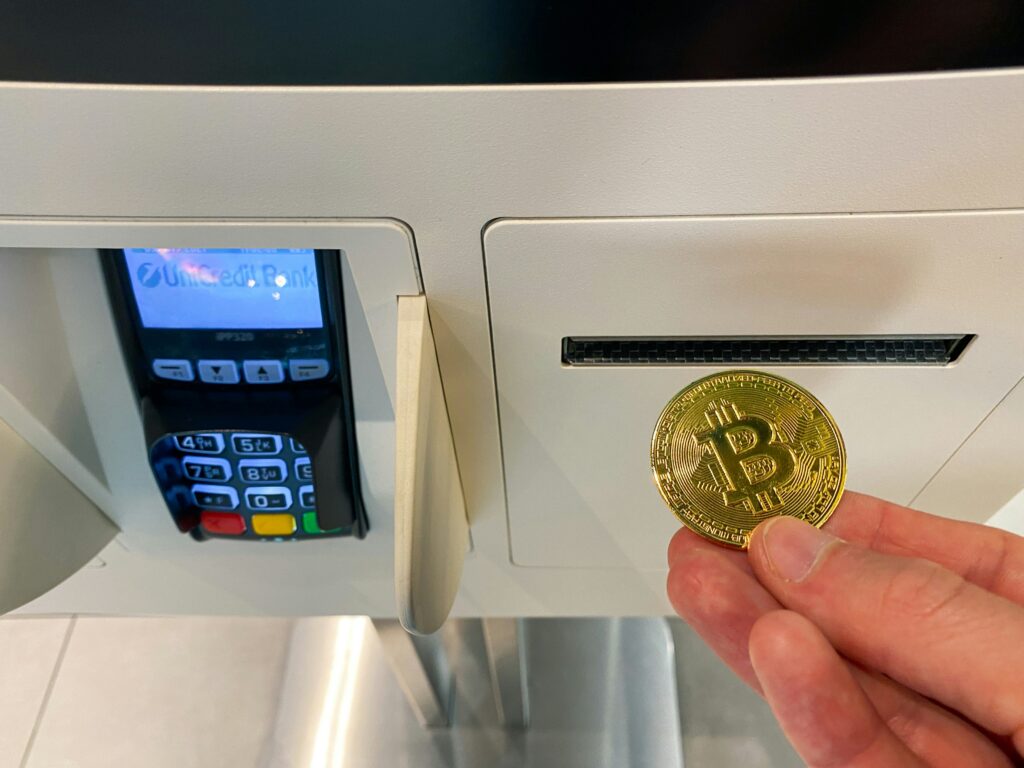
Introduction
In today’s global economy, money should move as fast as information. Yet, even as businesses operate in real time, their payments are often stuck in a slow lane designed decades ago. Wire transfers crawl across borders, card fees eat into profits, and currency conversion adds hidden costs, turning every payment into a small financial puzzle.
This is why stablecoins are quietly transforming how companies handle money. They are digital assets pegged to traditional currencies like the U.S. dollar and the Euro, and combine the predictability of fiat with the efficiency of blockchain, making payments faster, cheaper, and easier to manage.
This isn’t about replacing traditional finance overnight. It’s about giving businesses a payment tool built for a digital-first world. Whether you’re managing a global workforce, sourcing from multiple countries, or expanding into new regions, stablecoins can facilitate frictionless transactions at any scale.
Let’s walk through the advantages in detail and explore how they’re redefining the way businesses move money.
What Are Stablecoins? A Quick Guide for Business Owners
On the surface, stablecoins might sound like just another cryptocurrency, but they are different. Think of them as a bridge between the familiar world of dollars and the technical blockchain ecosystem.
Unlike volatile crypto assets like Bitcoin or Ethereum, stablecoins are pegged to fiat currencies like the U.S. dollar, the euro, or even commodities such as gold. This keeps their value predictable, making them practical for day-to-day business transactions.
There are three main types of stablecoins businesses should be aware of:
- Fiat-backed stablecoins – These are the most common and widely used. Each token is backed by an equivalent amount of cash or short-term securities held in reserve. For businesses, USDC and USDT are examples that offer reliability and a clear connection to the familiar value of fiat money.
- Crypto-collateralized stablecoins – Backed by other cryptocurrencies, these stablecoins maintain stability through over-collateralization and automated mechanisms. DAI is the most notable example. While slightly more complex, they demonstrate the flexibility of digital finance.
- Algorithmic stablecoins – These rely on smart contracts to control supply and demand rather than direct backing. They are less common for businesses due to higher volatility risk, but are an important part of the broader ecosystem.
For business owners, stablecoins aren’t just another payment option; they are a tool for global financial efficiency. Understanding them is the first step in modernizing your payment infrastructure and staying competitive in a global economy.

Why Stablecoin Payments Are a Game-Changer for Businesses
Stablecoins promise fast payments, ensuring a seamless flow of money and giving your business the freedom to move at par with the fast digital economy. To put this into perspective, imagine running a business where every invoice, supplier payment, and payroll transfer happens instantly without hefty fees eating into your margins or regional/international banks slowing you down.
Here are some indicators as to why businesses are adopting stablecoin payments:
- Legacy payment systems are slow and costly: Bank transfers, wire payments, and card networks involve multiple intermediaries, adding delays and fees.
- Blockchain reduces friction: Payments move directly from sender to recipient, lowering costs and simplifying verification.
- Global access is easier: Businesses can reach unbanked markets and expand internationally without relying on local banking infrastructure.
- Strategic adaptation, not a trend: Using stablecoins helps businesses align with evolving customer expectations and the realities of global commerce.
In short, stablecoins transform the bottlenecks of traditional payment systems into a strategic advantage. They provide businesses with an opportunity to prioritize innovation, expansion, and agility instead of chasing complex payment systems that slow them down.
Strategic Advantages of Stablecoin Payments for a Business
1. Faster Payments
In business, time is leverage, and the longer funds take to arrive, the more cash becomes unavailable for reinvestment or expenses. Traditional bank transfers can take days or weeks to clear, especially across borders, because they pass through multiple intermediaries, each adding delays.
Stablecoins run on blockchain networks, which operate around the clock to remove those roadblocks. This means that payments can settle within minutes, not days, because there’s no waiting for banking hours or clearing cycles.
There’s a consequential impact on this speed, such as:
- Improved cash flow: Faster settlement frees up working capital that would otherwise sit idle.
-
- Operational agility: Companies can pay suppliers instantly, securing discounts or better terms.
-
- Confidence in global operations: Teams in different time zones get paid without delay, building trust.
Think of stablecoins as emails for money: click “send,” and funds arrive almost instantly, no matter where the recipient is. In a business environment where agility matters, this speed is more than convenience; it’s a market leverage.
2. Lower Transaction Costs
While speed is the primary advantage of stablecoins, the cost savings they offer are equally significant. Traditional international payments typically involve:
- Bank transfer fees
- Foreign exchange markups
- Intermediary charges
- Card processing costs
By cutting out multiple middlemen, stablecoins dramatically reduce these costs. Sending a payment on-chain often costs less, even for large amounts.
Here’s why it works:
- Direct, peer-to-peer transfers: Businesses send funds straight to recipients, without relying on a chain of banks.
-
- No forced conversions: If both parties use the same stablecoin, there’s no need to pay currency exchange fees.
-
- Predictable pricing: Fees are network-based and transparent, so there are fewer surprises.
While costs can spike temporarily during high network congestion, they’re still far below traditional rates. For businesses with high payment volumes, this translates into thousands of dollars saved annually, savings that can be reinvested in growth, product development, or competitive pricing.
3. Improved Accessibility
Traditional banking has strict requirements and regional limits. Many vendors and small businesses in emerging markets struggle to receive international payments, either because banking infrastructure is weak or because fees make it impractical.
Stablecoins change that dynamic. With only a smartphone and a digital wallet, anyone can send or receive payments globally. For businesses, this means:
- Simplified international payments: No need to set up multiple bank accounts or navigate complex correspondent banking relationships.
-
- Support for underserved regions: Pay talent or suppliers in countries where bank coverage is low.
-
- Flexibility for remote teams: Stablecoins fit naturally into a distributed workforce model.
However, accessibility isn’t universal yet. Some regions limit or regulate crypto use heavily, and wallet security remains a concern. But for many, stablecoins have become a first entry point into digital finance. For companies, this means expanding operations into places that were once too costly or complicated to reach.
4. Improved Transparency and Security
With traditional payment systems, a transaction often travels through a maze of banks, processors, and gateways. Tracing a single payment can take days of back-and-forth communication.
Blockchain redefines this approach, where every stablecoin transaction is permanently recorded on a public ledger, visible to anyone with the right tools. This transparency brings:
- Instant auditability: Businesses can verify payment status in real time.
-
- Fraud prevention: Transactions are cryptographically secured, making it harder for bad actors to tamper with funds.
-
- Simplified compliance: Regulators and auditors can easily trace funds, streamlining reporting.
At the same time, privacy remains manageable since major stablecoins operate on public blockchains, but instead of names, only the wallet addresses are visible. Companies can pair transparency with internal processes to ensure sensitive data is protected.
The result is a payment system that feels trustworthy and modern. Instead of chasing paperwork, finance teams can focus on strategy, knowing every transaction has a digital paper trail embedded within.
5. Simplified Global Operations
For businesses operating internationally, payments often resemble a juggling act; multiple bank accounts, different local currencies, and fluctuating exchange rates all create complexity.
Stablecoins streamline this by providing a single, global payment layer. Instead of navigating a patchwork of banks and correspondent networks, businesses can rely on a consistent digital asset like USDC or USDT for all cross-border transactions.
This simplification has several benefits:
- Reduced foreign exchange exposure: Keeping reserves in a stablecoin pegged to the dollar eliminates constant currency conversion.
-
- Centralized payment rails: One wallet can handle multiple regions, making treasury management easier. On- and off-ramp solutions also streamline currency conversion without integrating multiple rails.
-
- Lower administrative overhead: Fewer intermediaries mean less paperwork and fewer reconciliations.
Implementing stablecoin payouts may require upfront investment in wallet infrastructure and staff training, but the long-term operational efficiency more than makes up for it. For resource-strapped enterprises, Wallet-as-a-Service offers a plug-and-play solution for accessing wallets without reinventing the wheel.
Over time, as stablecoins gain wider acceptance, they’ll feel less like a workaround and more like standard financial plumbing.
6. Better Cash Flow Management
Cash flow is the engine that powers business operations, and every delay in moving money creates friction. Stablecoins facilitate frictionless settlement because they are instant, and companies can:
- Pay vendors just in time, reducing the need to hold large reserves.
-
- Reinvest revenue faster, turning cash into growth more quickly.
-
- Forecast cash flow more accurately, thanks to clear, immediate transaction data.
Self-executing codes on the blockchain, known as ‘smart contracts,’ add another layer of sophistication. They allow businesses to automate precise money movement. Imagine a vendor payment that triggers automatically when goods arrive or payroll that runs without manual intervention.
While there’s still some complexity around on/off-ramp conversion for stablecoins in regions with frequent regulatory shifts, they offer a powerful cash flow advantage for businesses ready to modernize their treasury.
7. Competitive Advantage in Talent Acquisition
Money is part of the employee experience, and for global teams, getting paid quickly and reliably can make or break job satisfaction.
Stablecoins give businesses an edge by:
- Paying international employees without expensive transfer fees or delays.
-
- Offering workers faster access to earnings improves their financial stability.
-
- Signaling tech-savviness and innovation, which appeals to younger talent.
In regions with currency volatility, stablecoin salaries can even be a perk. Workers can hold earnings in a stable currency, shielding them from local inflation. Offering flexible payment methods demonstrates that your business understands the realities of a global, remote-first workforce.
As digital assets become more mainstream, companies that adopt them early position themselves as forward-thinking employers, something that can attract high-caliber talent in a competitive market.
8. Stablecoins as a Bridge, Not a Replacement
While stablecoins bring clear benefits, they’re not here to overthrow traditional finance. Instead, they complement it. Many companies start by offering stablecoin payouts as an option, alongside bank transfers or card-based systems.
This hybrid model allows businesses to:
- Test stablecoin adoption without alienating customers or employees.
-
- Stay compliant in jurisdictions where crypto regulation is still evolving.
-
- Offer flexibility by letting recipients choose how they want to receive funds.
The transition to stablecoins is less about jumping on a trend and more about future-proofing payments. Businesses that experiment now will be better prepared as regulators, banks, and fintech platforms integrate stablecoins more deeply into everyday finance.

What Businesses Can Benefit from Stablecoin Payments?
Stablecoin payments provide tangible advantages for businesses that operate internationally or handle frequent cross-border transactions. Key sectors that benefit include:
- Fintechs and Payment Service Providers (PSPs): Companies in fintech and payment processing can integrate stablecoins to offer faster settlements, lower transaction costs, and seamless digital payouts to clients and partners. This enhances their service offerings while reducing operational complexity.
-
- International Trade and Import-Export Firms: Businesses engaged in cross-border trade often face delays, currency conversion costs, and intermediary fees. Stablecoins streamline payments between suppliers and buyers, providing near-instant settlement and improving cash flow management across global supply chains.
-
- Global Payroll for Remote Teams: Companies with distributed teams can pay employees and contractors anywhere in the world quickly and reliably. Stablecoins eliminate delays and high bank fees, making payroll simpler and more predictable.
-
- International Money Transfer Operators (IMTOs): Money transfer companies can leverage stablecoins to reduce remittance costs, enhance transparency, and accelerate settlement times for individuals and businesses alike.
-
- Global e-commerce and marketplaces: Companies selling products internationally face high transaction fees and slow payment settlement with traditional methods. Stablecoins enable instant, low-cost payments to suppliers and vendors, improving cash flow and operational efficiency.
-
- Remote-first companies and startups: Businesses with distributed teams often struggle with payroll delays and high transfer fees. Stablecoins allow rapid, reliable payments to contractors and employees anywhere in the world.
-
- Import-export and supply chain businesses: Frequent cross-border payments can be slowed by intermediaries and currency conversions. Stablecoins simplify these transactions, reducing both costs and administrative overhead.
In short, any organization handling global transactions, whether for trade, payroll, or financial services, can leverage stablecoin payments to reduce friction, cut costs, and operate more efficiently.

How Traditional Payment Rails Compare to Stablecoins
Legacy payment rails like SWIFT transfers, wire payments, and card networks have reliably moved money for decades. Yet for modern businesses, these systems can feel slow, costly, and constrained by legacy infrastructure. Stablecoins offer a digital-native alternative built for speed, transparency, and global reach. Here’s how they compare:
| Element | Legacy Rails | Stablecoins |
| Speed | Domestic payments take 1-13 business days. International transfers take longer due to multiple intermediaries and manual reconciliation. | Settlement in minutes, around the clock, without delays from weekends or bank holidays. |
| Cost | High cost due to accumulating wire fees, forex margins, and card processing charges in high-volume payments. | Minimal network fees, usually a few dollars with no bank or processor cuts. |
| Currency Conversion | Multiple conversions for cross-border payments, adding hidden margins. | Transactions in digital representations of fiat, USD or EUR Eliminates repeated conversions and reduces friction. |
| Global Access | Limited to banking infrastructure and business hours, leaving gaps in underserved markets. | Accessible anywhere with internet and wallet, enabling payments in regions with limited banking coverage. |
| Security and Reversability | Offers customer protection, but carries risky chargebacks that may cost businesses. | Transactions are final after confirmation. Reduces fraud exposure and requires careful handling to prevent errors. |
| Compliance and User Experience | Built-in regulatory and familiar processes reduce operational overhead | Varying compliance standards, but with improved AML/KYC processes and UX Stripe is already integrating stablecoin payouts into familiar dashboards, bridging innovation with usability. |
By framing stablecoins as a business efficiency tool rather than a speculative asset, companies can rethink payments as a strategic lever, reducing costs, accelerating cash flow, and reaching markets that traditional rails struggle to serve.

Conclusion: Faster, Smarter, and Built for a Global Economy
Stablecoins take what’s broken about cross-border payments and fix it. They move money instantly, cut unnecessary fees, and open doors to markets and talent pools that were once out of reach. They make global operations simpler, cash flow healthier, and payment rails more transparent.
For businesses, adopting stablecoin payouts is less about chasing novelty and more about building resilience and agility. The companies that embrace these tools early will be the ones that navigate future shifts in global finance with confidence.
If your business operates across borders, or plans to, consider making stablecoins part of your payment strategy. Start small, experiment with trusted providers like YoguPay to stay ahead of global finance with stablecoin payouts.
Simplify cross-border transactions, reduce costs, and unlock new growth opportunities with speed and confidence. Visit www.yogupay.com or request a demo today to see how we transform your financial operations from a burden into an operational advantage.